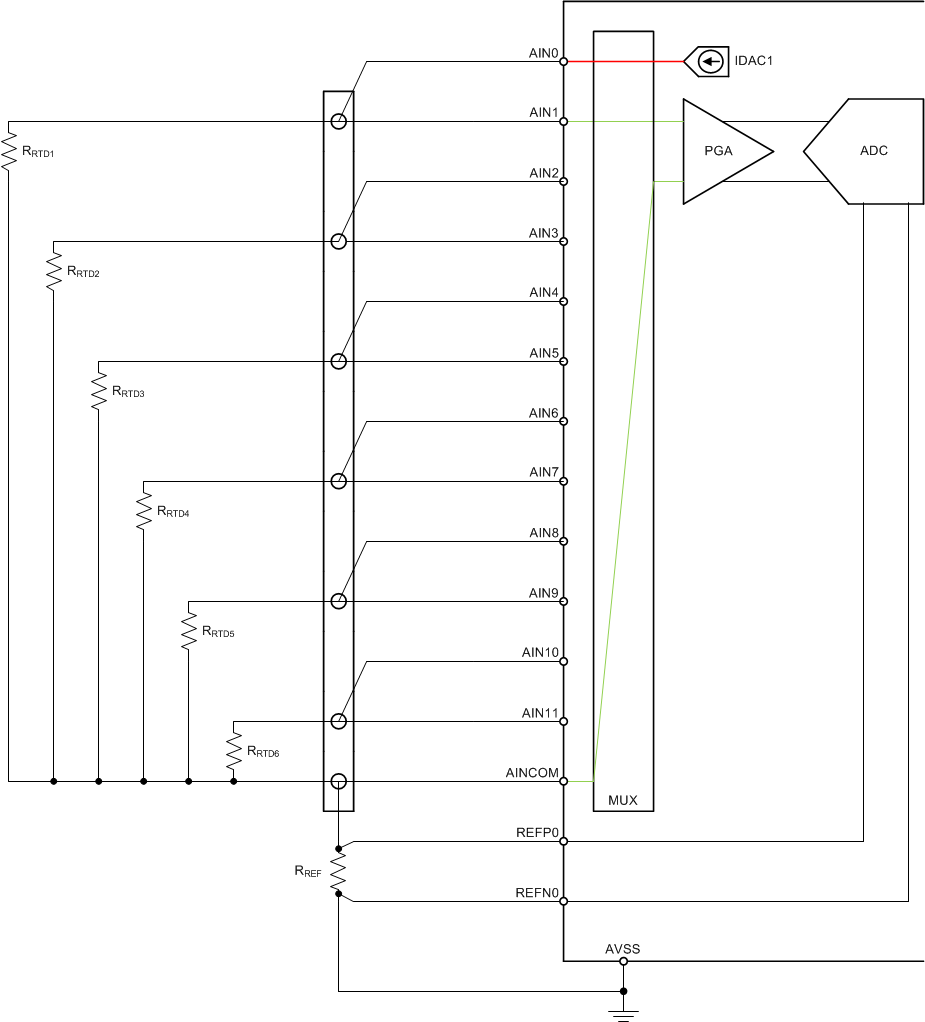Other Parts Discussed in Thread: ADS1220, REF3030, ADS124S08
Hello,
i have to use the ADS1248 in one Project. A differential measurement is not really needed. I only have to measure a voltage over a Resistor with fixed (1mA) current.
Therefore i have connected one Pin of the resistor (which has to be measured) to GND, the other one to a (positive) Input channel.
What to do with the negative Channel? Can i connect it simply (or through a resistor) to GND to have a single ended measurement with full ADC Range?
From Datasheet i see some "pseudo-differential" measurement, where the negative Channel is not connected to GND, but to VCC/2 or something else. What is the Advantage here?
Regards
Daniel


